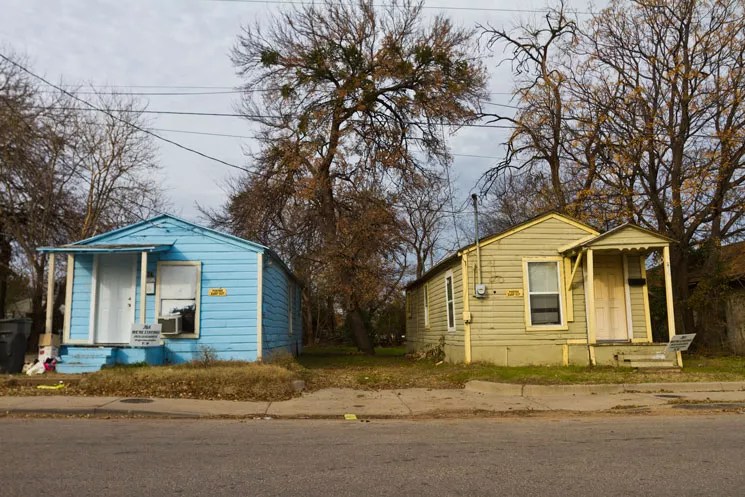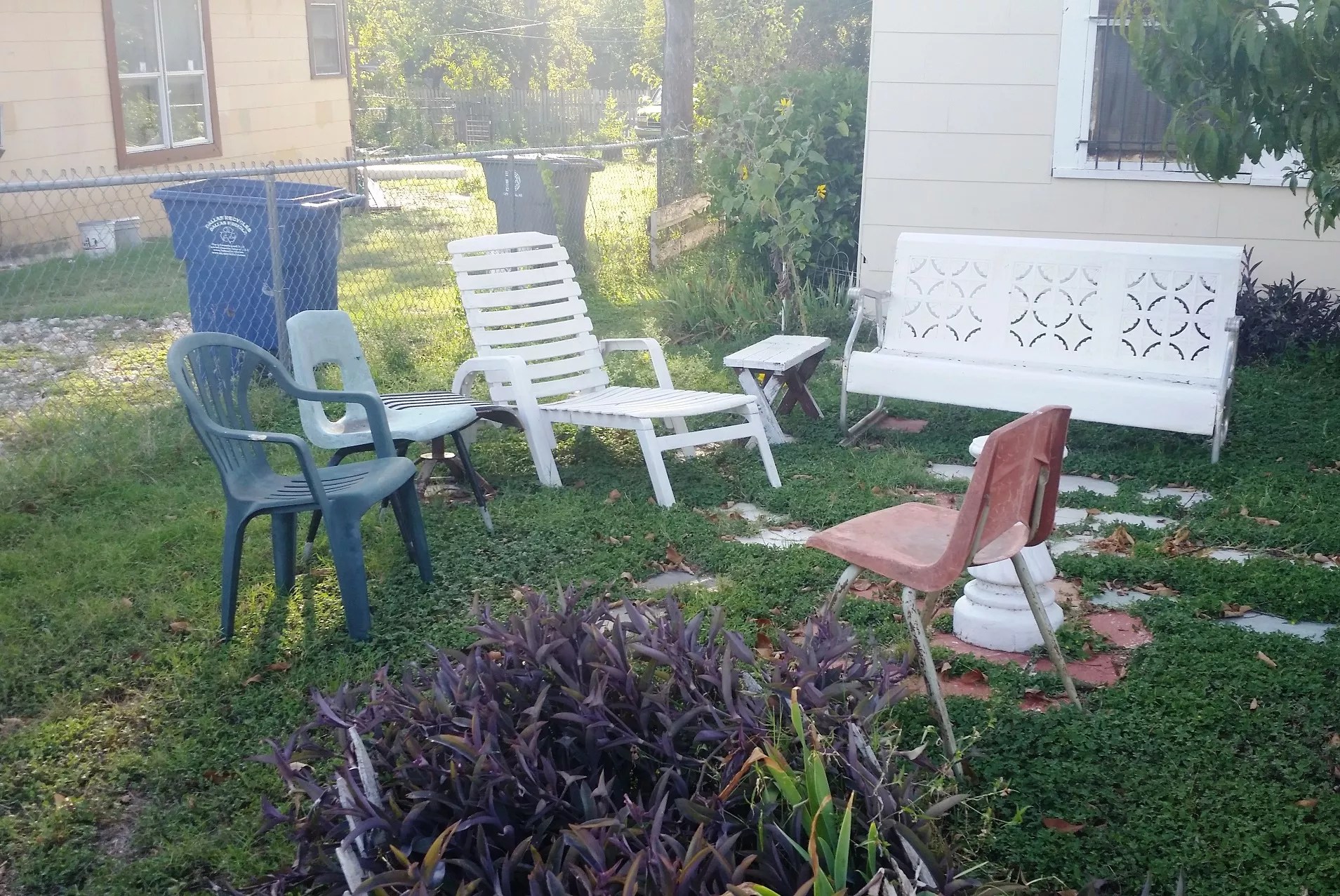
Mark Graham

Audio By Carbonatix
The Dallas Morning News has been doing some good stories lately about the need to clean up a low-income housing program that operates on surplus city-owned lots. I wrote some pieces myself not long ago about ideas for cleaning up poor neighborhoods in West Dallas.
But, wait. We’re not going to clean up everything, right?
Semi-shacky neighborhoods with dead dishwashers on front porches and truck engines hanging from trees have their legitimate place in the urban eco-system, do they not? Not everyplace has to look like Chip and Joanna Gaines just got done with it. We need the before shots as well.
When we roll up our civic sleeves and grab our buckets of urban Pine-Sol, we need to pause and reflect on the harm we may do by trying to make things too tidy. In West Dallas already, hundreds of low-income families have been displaced as the unintended consequence of a recent tightening of residential building standards. Surely those families would have chosen to put up with less efficient air conditioning systems rather than lose the only homes they could afford to rent.
Dallas, make your New Year’s Resolution Count!
We’re $13,000 away from our End-of-Year campaign goal, with just a five days left! We’re ready to deliver — but we need the resources to do it right. If Dallas Observer matters to you, please contribute today to help us expand our current events coverage when it’s needed most.
And even where we have decided that change must occur – in places where we think the existing conditions cannot be allowed to endure forever – there’s a big difference between doing it with a gradual transition and doing it with a roaring wall of bulldozers.
When I wrote about West Dallas recently, I talked with David Spence, a pioneer developer in the Bishop Arts District two miles south of West Dallas in North Oak Cliff. Between 1995 and now, that area saw a much slower more organic process of redevelopment than the forest fire of gentrification underway now in West Dallas.
No one would paint Spence as a ruthless capitalist bent on tossing widows and orphans into the snow, but it’s also a mistake to take him for a hippie because he operates in the closest thing Dallas has to a Bohemian part of town. Spence is a small businessman who thinks there is money to be made in diversity and community. Some of his thoughts on gentrification are predictable, given his own role, but more are counterintuitive.
Spence told me one consequence of the slow pace of change in North Oak Cliff was that the original inhabitants got a chance to look over the new neighbors coming in around them, and some of the originals decided to stay, creating a more diverse mix, at least for now, and less of a total scrape.
He wasn’t telling me that North Oak Cliff did it more gently than West Dallas because North Oak Cliff is nicer. Much of the difference, he said, had to do with the sizes of the available properties – a quilt-work of little house lots in North Oak Cliff versus great big rambling industrial properties in West Dallas more amenable to great big rambling new developments.
But as we are seeing already, the big new projects pushing deeper into West Dallas must inevitably butt up against poor little neighborhoods. In areas where immigrants from Mexico have settled, some of those streets are close-knit, with communal roots deep in the ground however modest the housing itself may be. So is that something we need to clean up, an ominous phrase?
Does it not occur to us that people on those streets may feel comfortable precisely because their street is a little soft and frayed around the edges? Do we not see how shabbiness can be its own forgiveness, its own warm embrace and acceptance? Can we never just mind our own business?
And then there is the business of redevelopment itself. Why would we assume that massively planned development, designed to gobble entire regions of the city, is better or more likely to succeed over time than development that is inch-by-inch and carried out in carefully chewed bites?
One of Spence’s favorite themes – one I have heard from other developers who have worked in poor neighborhoods in East Dallas – is that gentrification shouldn’t be viewed as entirely negative where it has the effect of increasing the asset value of existing homes, thereby giving existing owners a boost in net worth:
“The nonprofit in North Carolina that I trained under, where I cut my teeth, was all about net worth, not about income,” he said. “I have really come to believe that.”
In North Oak Cliff, where old low-rise brick commercial buildings have been repurposed as restaurants and coffee shops, the previous owners were able to sell out at nice profits.
“When we redid the corner around Bishop and Davis in 2010, we made probably four or five dozen hard-working Mexican-American auto mechanics quarter- and half-millionaires at one fell swoop, because all of a sudden Flores Body Shop could now be Oak Cliff Coffee Roasters.”
That kind of change also does not bring with it the bruising monolithic quality of what has been happening in West Dallas, where City Hall appears to be pushing entire classes of owners out of the way, sometimes with methods just shy of eminent domain, which may not be far behind.
To take the kind of organic change that has transformed North Oak Cliff and transplant it to some other area, Spence said, City Hall should do just the opposite: “By really loosening the strictures on development, the city could make it happen faster.
“That has been my basic argument. We should be looking for and identifying other Bishop Arts districts, and we should be making it easy for the little guys, the ants, to come in.
“The city wants to invite the bulldozers in. What you really want to do is invite the carpenter ants in. The bulldozers will follow.”
He wasn’t telling me that all of West Dallas should be redeveloped the way North Oak has been. Conditions are very different, and at the far eastern end of West Dallas where the new Margaret Hunt Hill Bridge crosses the Trinity River, that horse is already out of the barn.
“Surprise, surprise,” he says, “when you build a yellow brick road, somebody is likely to build an Oz at the end of it. But it’s also going to happen faster in West Dallas, because the parcels are bigger.”
The inflection point is where the big-parcel, high-concept style of new development that begins at the foot of the new bridge comes far enough west to collide with the old poor and modest residential streets, as it already has at some points. What happens next?
Spence is not a fan of stricter zoning to protect the current uses. In fact he hopes those neighborhoods will be spared some of the restrictive urban planning and design that has come out of the City Design Studio, a privately funded entity that operates out of City Hall. Spence dismisses the City Design Studio as, “these high-minded planners who never bothered to ask if anybody actually wanted to cash out and move to Cedar Hill.”

Oh, heaven forbid! Lawn furniture on the lawn!
Jim Schutze
Nor does he think they have good ideas for replacement housing: “I have seen some of the stuff that they have designed for people to actually live in, and it was unsaleable. I don’t like giving people a whole neighborhood to redesign, if they can’t pull off a one-bedroom apartment.
“I am so glad that we are prosperous enough here now that they are not poking their noses into North Oak Cliff anymore.”
When I talk to Spence and others like him who are out there doing the deals in Oak Cliff and East Dallas, I am always reminded of a young writer from Connecticut who came to Dallas a couple years ago to work on some story. I forget what his story was. He came to my house, and we talked about it, whatever it was.
When we were done talking, I asked him what he thought of Dallas. He gushed. He said he absolutely loved it. In fact he was worried that he wasn’t spending enough time on his story, because he kept driving around looking at the city. I asked him where in the city.
He had been driving around semi-abandoned industrial areas just south of downtown and along the Trinity River. I told him I had trouble understanding how a guy from one of the nation’s most elegant states could drive through some of the scabbiest parts of Dallas and fall in love.
But that was the whole point, he said. Everything in his part of Connecticut was done. Finished. Perfect. Top of the line, top of the market and totally out of the question.
What he saw here was the same thing the covered-wagon pioneers saw when they came into Oregon – virgin soil. He saw acres and acres of warehouses, boarded-up shops and broken-down houses that looked like they could be had for cheap and then turned into anything and everything.
Look, I also know what the Indians called those white-faced people in the covered wagons. They called them “the bees,” because they came in great roaring swarms that blackened the sky – more human beings than the native Americans had known could exist. And I know the end of that story.
I assume in telling this story that we all want a different ending. That’s what is so exciting about the new ethos in areas like East Dallas, Oak Cliff and West Dallas. The middle class is coming back into the city unburdened by the bigotry and chauvinism it was still wearing when we watched it leave town. There’s a whole new promise in what is happening now.
We just have to remember our aesthetic manners. Not every neighborhood needs to be tidy. Total tidiness is fascism. Life is not a contest to see who can have the neatest lawn. When we look at an occupied house, we should be glad somebody has a house. Then chill.